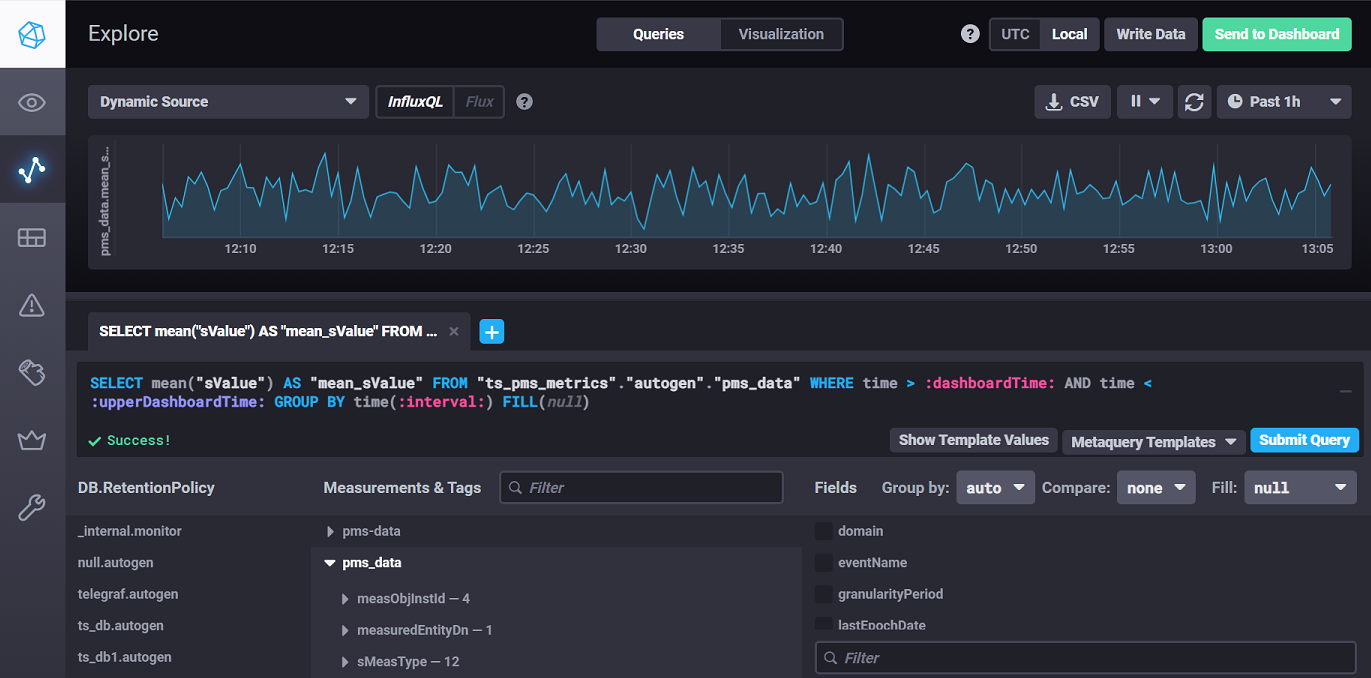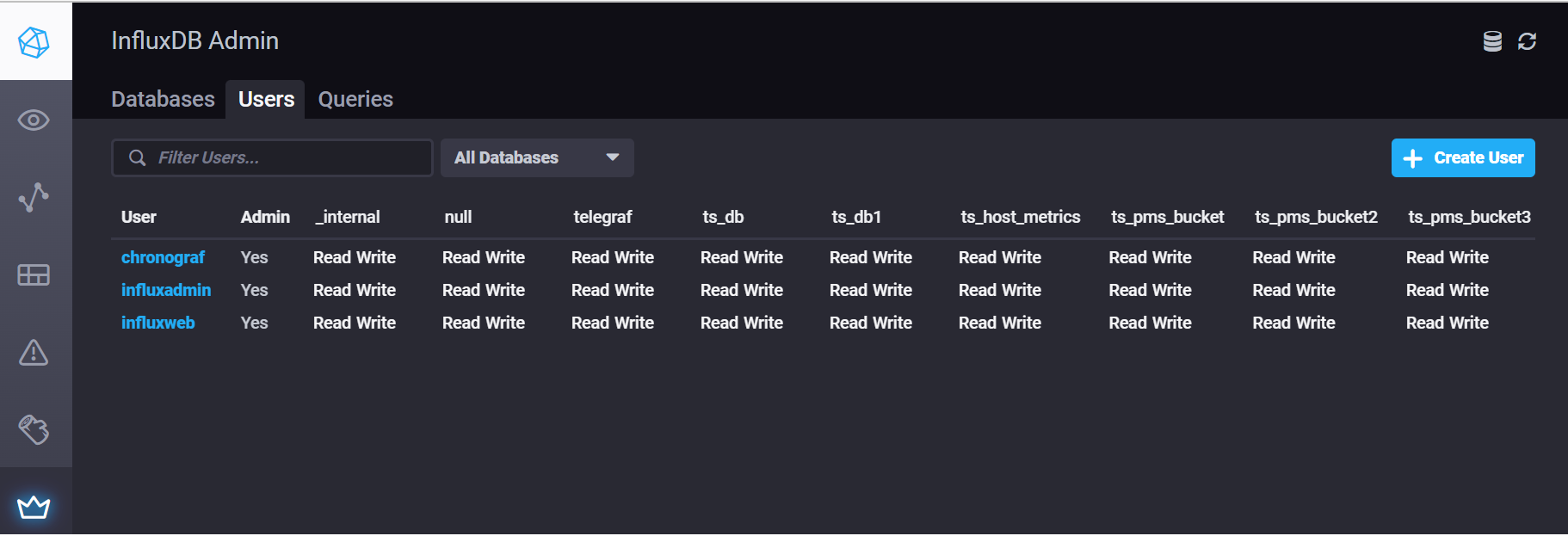...
| Code Block | ||||
|---|---|---|---|---|
| ||||
from influxdb_client import InfluxDBClient, Point, PermissionResource, Permission
from influxdb_client.domain import Authorization
my_org = "iot"
my_url = "http://localhost:8086"
my_username = "influxdb"
my_password = "influxdb"
my_bucket_name = "iot-bucket"
client = InfluxDBClient(url=my_url, username=my_username, password=my_password, org=my_org)
my_org_id = ""
organizations_api = client.organizations_api()
orgs = organizations_api.find_organizations()
# Check if org already exists
my_org_list = [o for o in orgs if o.name == my_org]
if len(my_org_list):
org = my_org_list[0]
my_org_id=org.id
print("Found " + org.name + ", " + my_org_id)
else:
print("Creating " + my_org)
org = organizations_api.create_organization(name=my_org)
my_org_id=org.id
buckets_api = client.buckets_api()
# Check if bucket already exists
bucket = buckets_api.find_bucket_by_name(bucket_name=my_bucket_name);
if not bucket is None:
print("Found " + bucket.name)
else:
print("Creating " + my_bucket_name)
bucket = buckets_api.create_bucket(bucket_name=my_bucket_name)
# Create a new Authorization token for the bucket
bucket_resource = PermissionResource(org_id=my_org_id, id=bucket.id, type="buckets")
read_bucket = Permission(resource=bucket_resource, action="read")
write_bucket = Permission(resource=bucket_resource, action="write")
auth = Authorization()
auth.org_id=my_org_id
auth.permissions=[read_bucket, write_bucket]
auth.description=bucket.name+' Token'
authorizations_api = client.authorizations_api()
authorizations_api.create_authorization(authorization=auth)
# Find available authorizations
authorizations = authorizations_api.find_authorizations()
for auth in authorizations:
print(auth.description + " - " + auth.token + " - " + auth.status + " - " + auth.org_id) |
Chronograf
Chronograf can be used to visualize your data in either V1 or V2, although it's very similar to what comes out of the box with V2.
You can use the following yaml to run it in your cluster: chronograf.yaml
You can also use it to create users:
Links
Manage security and authorization
...

